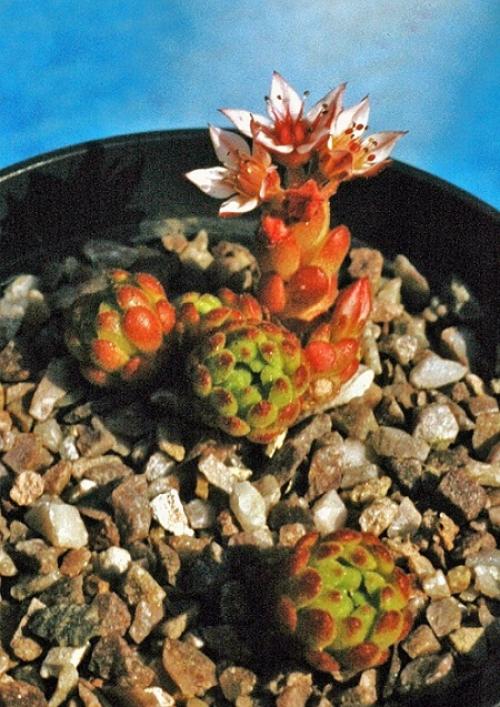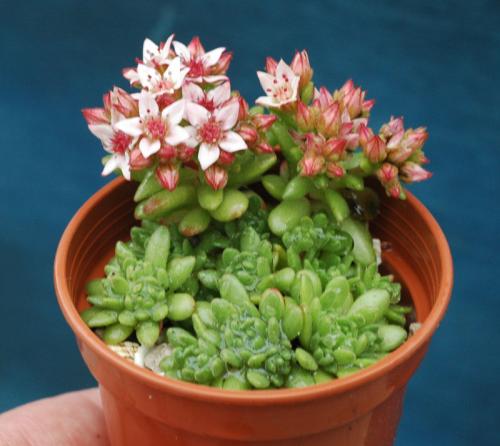TYMPHAEUM (Quézel & Contandriopoulos) 't Hart, 1995
Synonym : Sedum thymphaeum Quézel & Constandriopoulos (1967)
Distribution : Northern Greece; mountains, on rocks in crevices, limestone, 2000 – 2200 m, rare endemic and only known from 3 or 4 mountain tops.
Description (according to 't Hart in IHSP, 2003) :
Perennials, densely covered with minute glandular hairs, sticky.
Rosette globose, forming offsets on short axillary stolons.
Leaves oblong-obovate to spatulate, flattened, 10 – 12 x 3 – 4 mm .
Inflorescence axillary, ascending or erect, 5 – 8 (-10) cm, generally as few-flowered corymbose cymes with 2 – 3, sometimes forked, cincinni, pedicels to 8 mm,
Flowers : Sepals basally slightly connate, oblong , 3 – 4 mm, petals 7 – 9 mm, basally conate, with broadly ovate-elliptic, acute, 3 – 4 mm wide , white or sometimes tinged with red, filaments white, anthers red, styles ± 1 mm, fruits stellate-patent, yellowish-brown, with distinct paler (whitish) lips along the sutures, seeds ovoid, brown.
Cytology : 2n = 14
Formely included in Sedum, but closely related to the monocarpic P. pilosum and P. sempervivoides.
The 3 species can be easily hybridized, but their hybrids are completely sterile ('t Hart & al. 1999).

